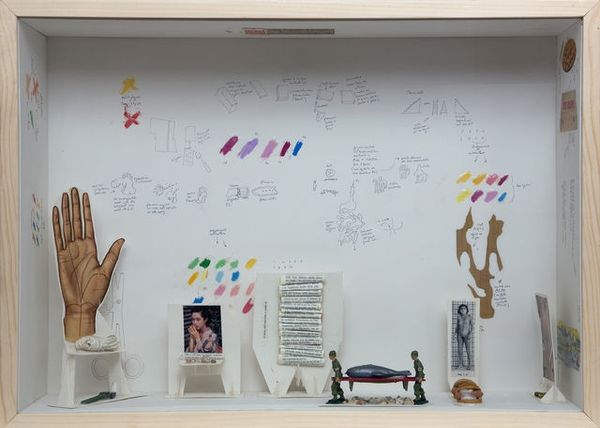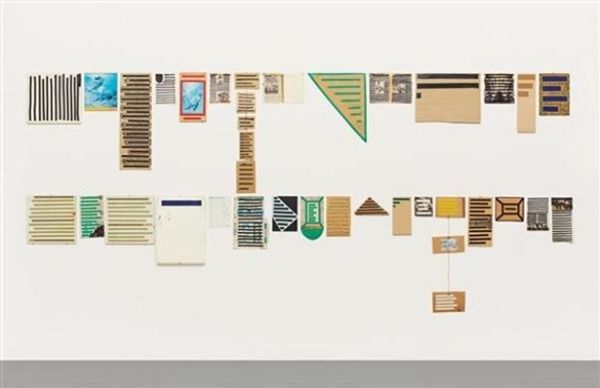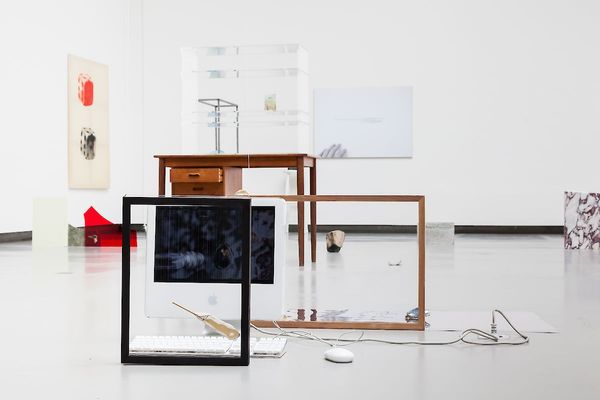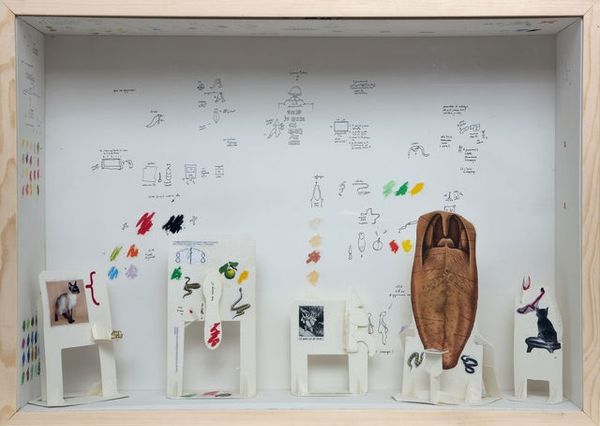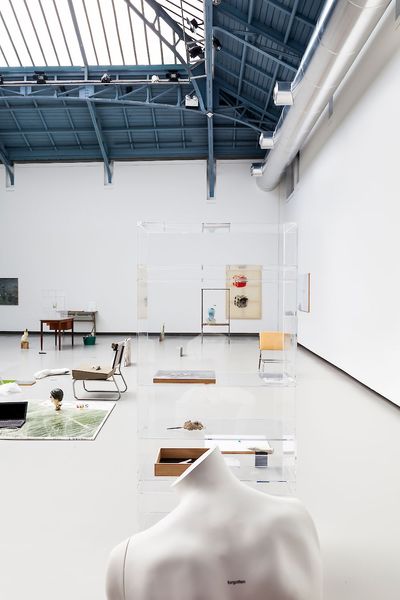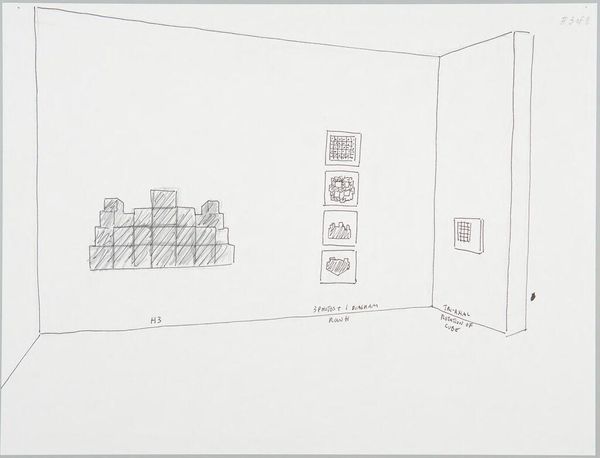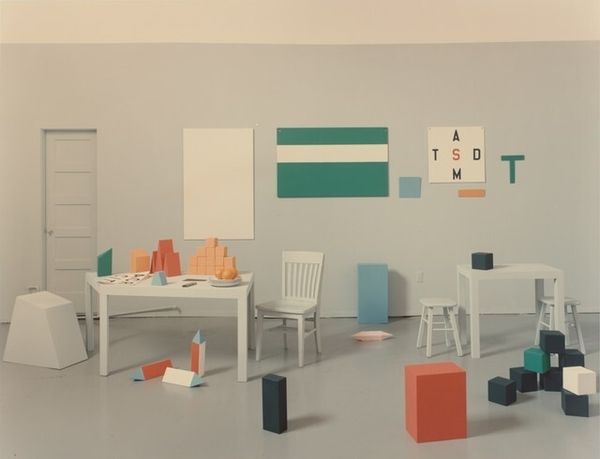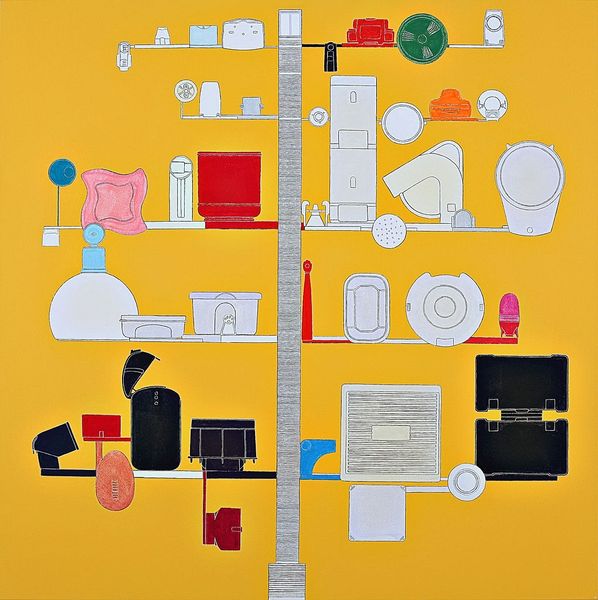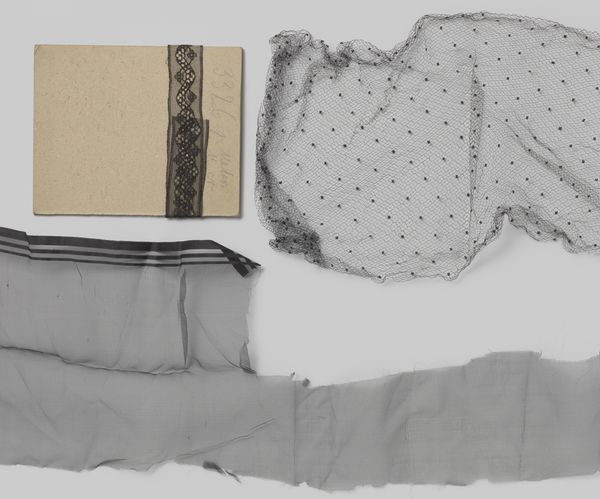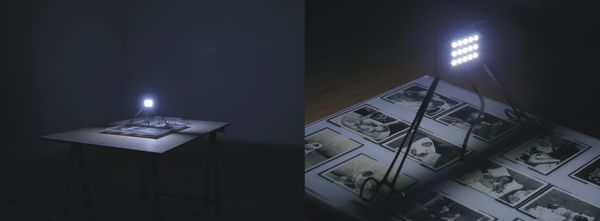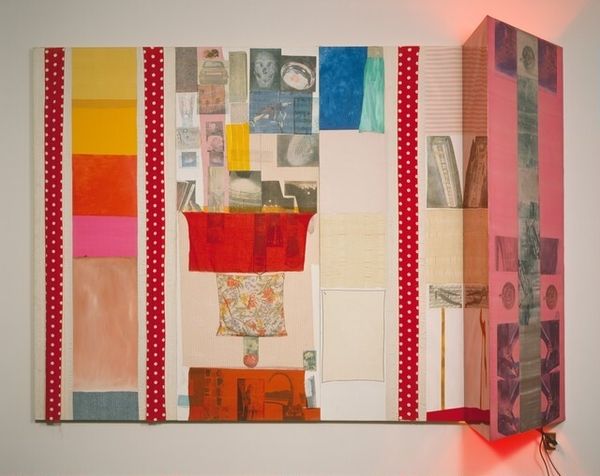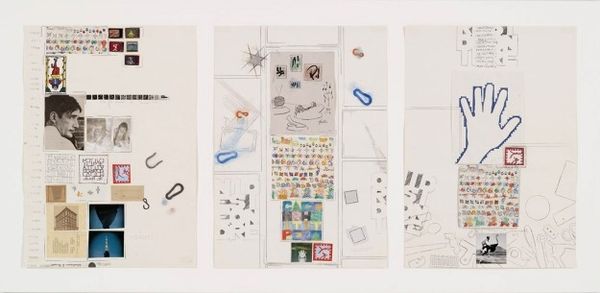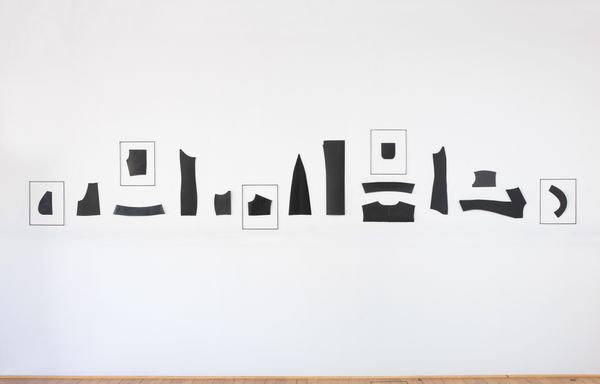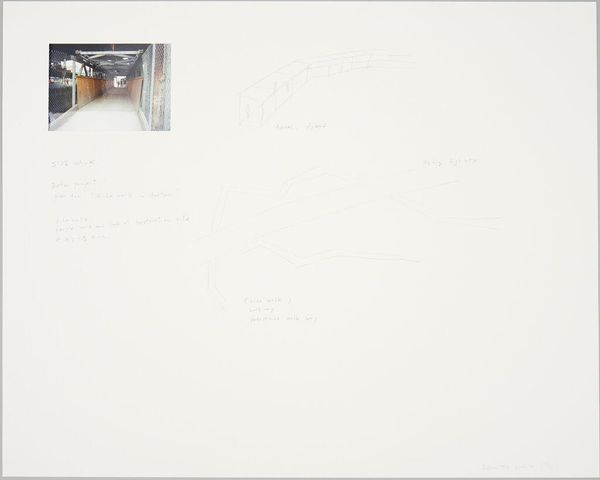
mixed-media, assemblage, installation-art
mixed-media
conceptual-art
assemblage
postmodernism
installation-art
Copyright: Gianfranco Baruchello,Fair Use
Curator: Gianfranco Baruchello's "Trasgressione navale 1," created in 1975, presents a fascinating mixed-media assemblage contained within a wooden box. It incorporates elements of both installation and conceptual art. Editor: It strikes me as a playful, almost whimsical world captured in miniature. The assemblage suggests a complex system, a self-contained universe. What can you tell us about its composition? Curator: Formally, the composition plays with layers and perspectives. The interior is structured around paper elements with drawn diagrams and notations. Objects are strategically placed creating depth and visual pathways throughout the boxed space. It is intriguing how Baruchello marries the flatness of drawn elements to the depth and reality of objects, even everyday items. Editor: Yes, those jeans tucked into the corner, for instance. Are they a symbolic fragment of popular culture intruding upon the carefully charted territories on display? I find them disarmingly ordinary, juxtaposed with what appear to be technical or scientific schematics. Are we looking at some sort of mapping or inventory here? Curator: The use of found objects is central to understanding this installation as more than simply a structural study. Notice the insect specimen pinned to a diagram? Or even the shadow the artist cleverly alludes to on the corner. Editor: I think these could be metaphors for control and entropy within these conceptual worlds. I am getting a sense of trying to freeze life and classify it. This also connects to the shadow motif as if these realities could all vanish and we must record them. This resonates deeply with archetypal struggles of man versus nature and technology, wouldn’t you agree? Curator: The semiotic weight of each chosen object carries intention; that much is apparent, which suggests an active disruption between organic and imposed structures, like an act of collage across art, memory, and perhaps cultural critiques that postmodernism so willingly engages. Editor: I will concede the insect evokes notions of the natural world encroaching upon our constructed environments! So much information in this small, tidy world, even if disordered at first viewing. Curator: It indeed leaves an imprint long after one disengages from its tangible properties. Editor: A symbolic voyage of exploration and control, both poetic and profoundly thought-provoking! Thank you for your perspectives.
Comments
No comments
Be the first to comment and join the conversation on the ultimate creative platform.
